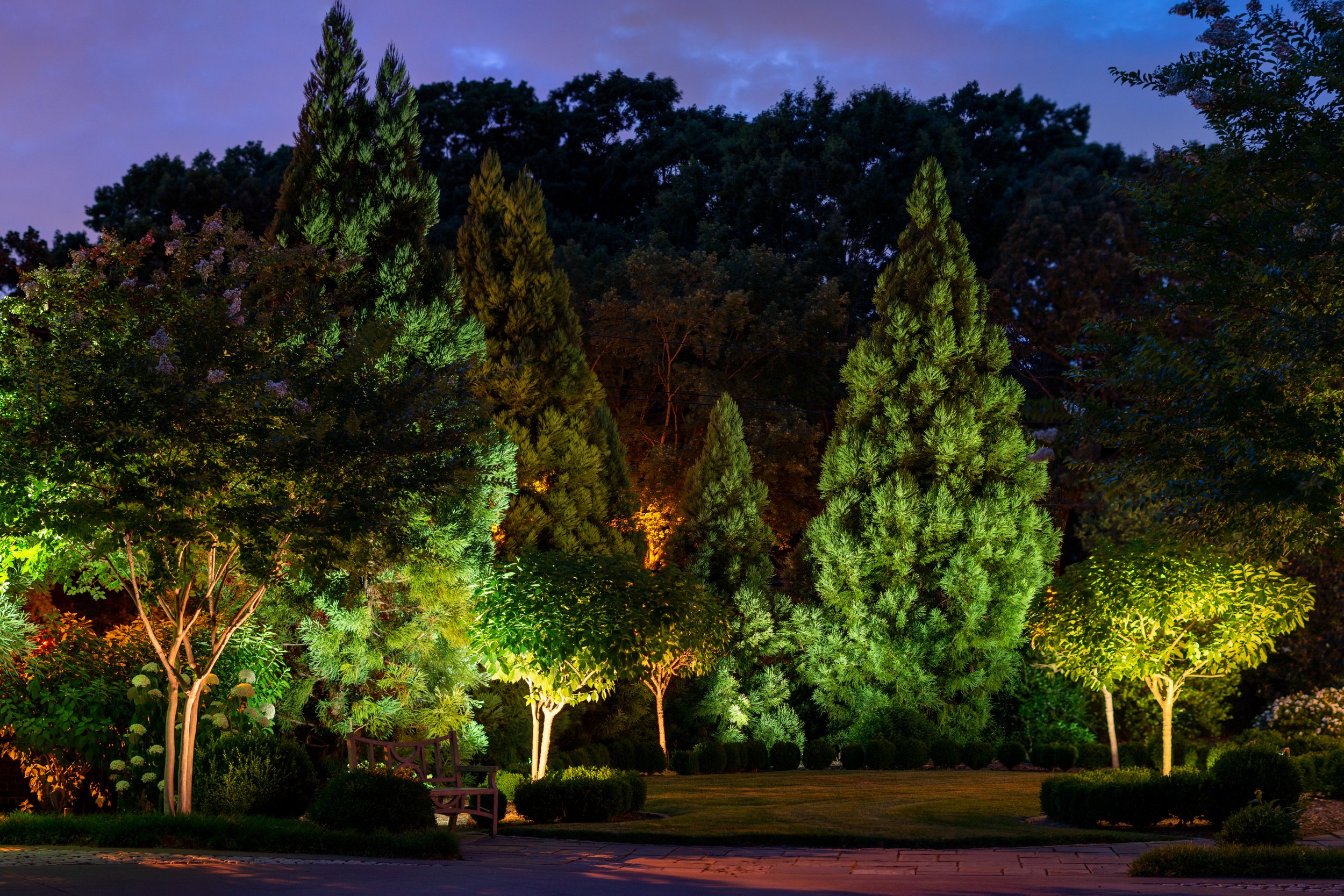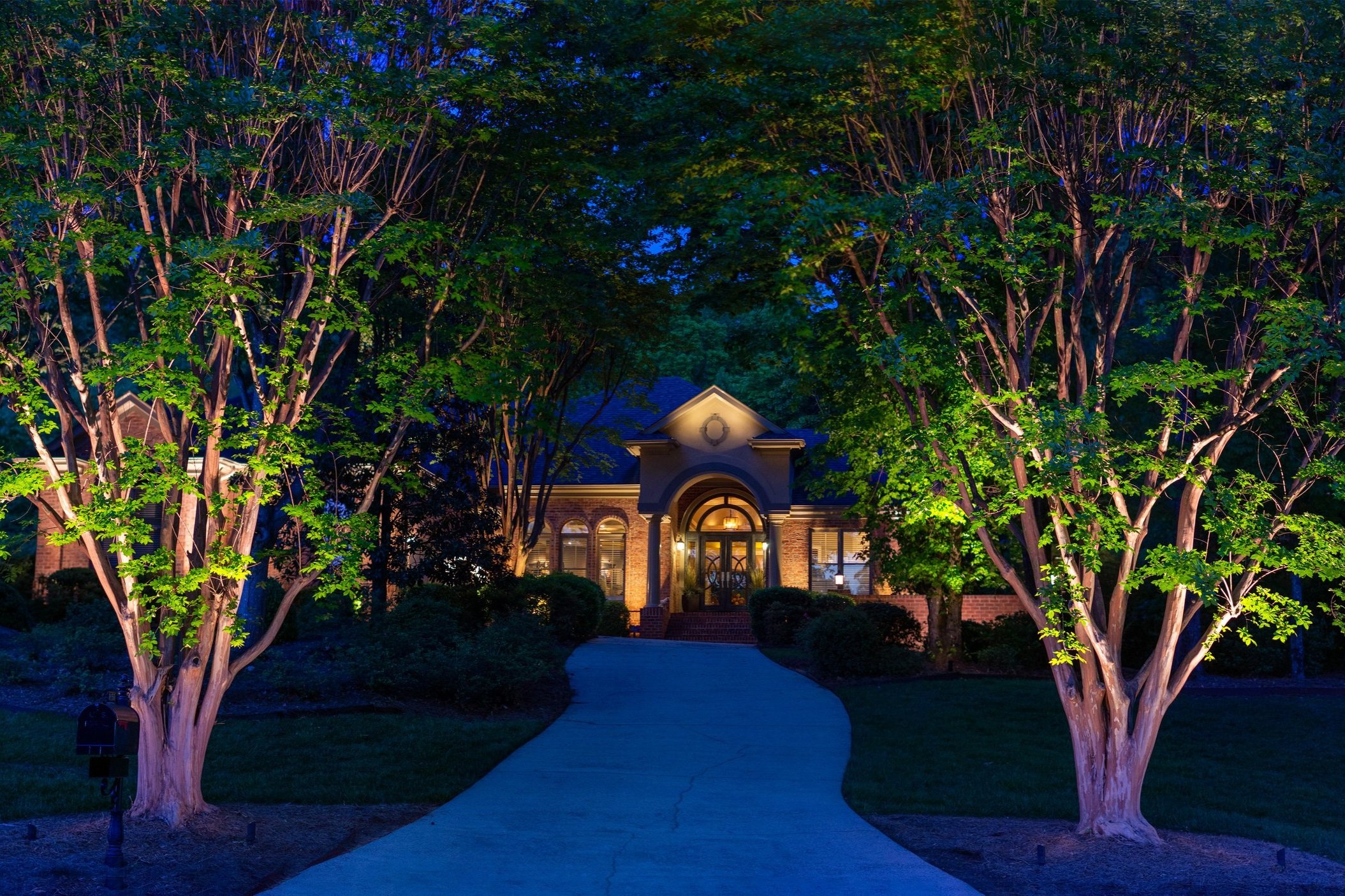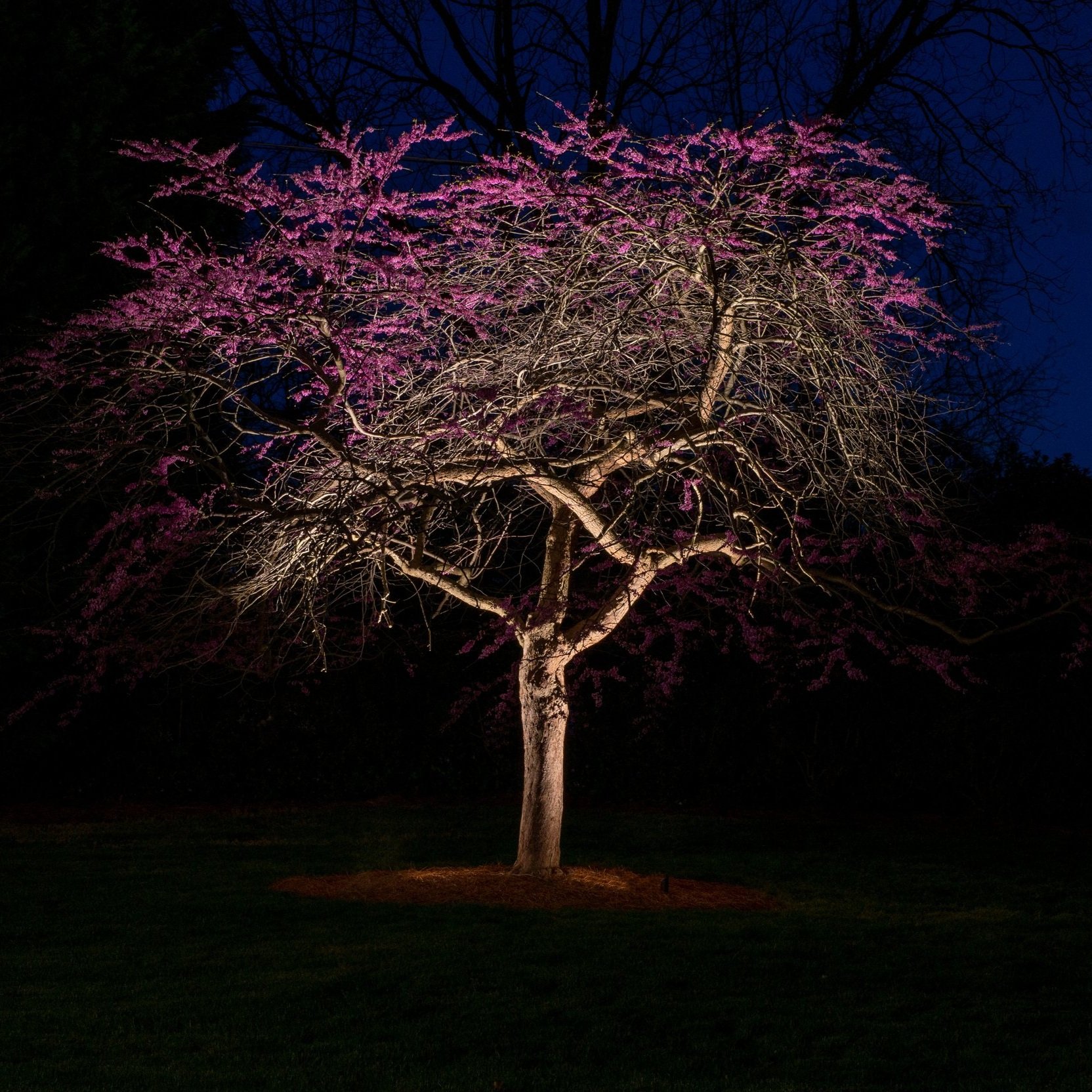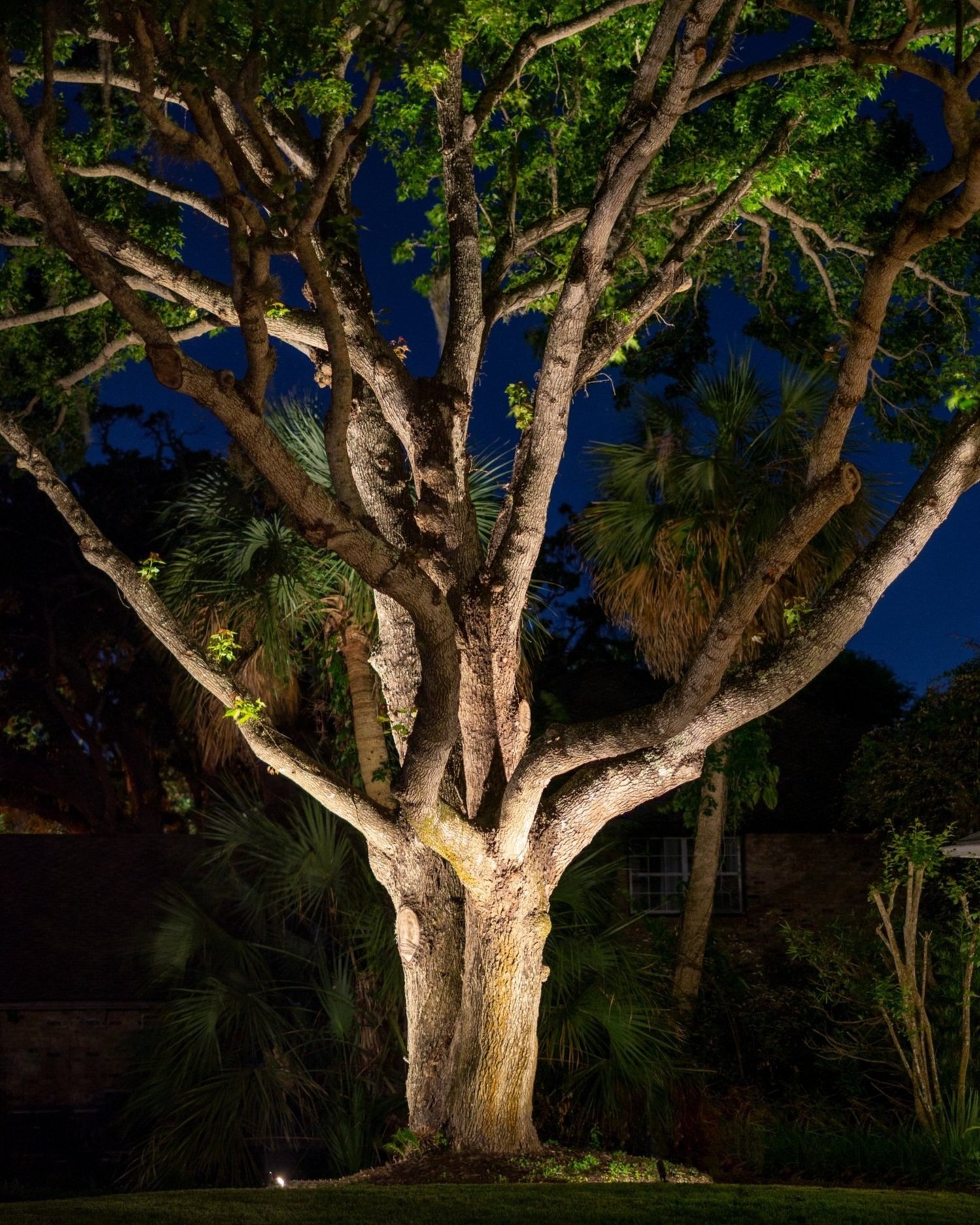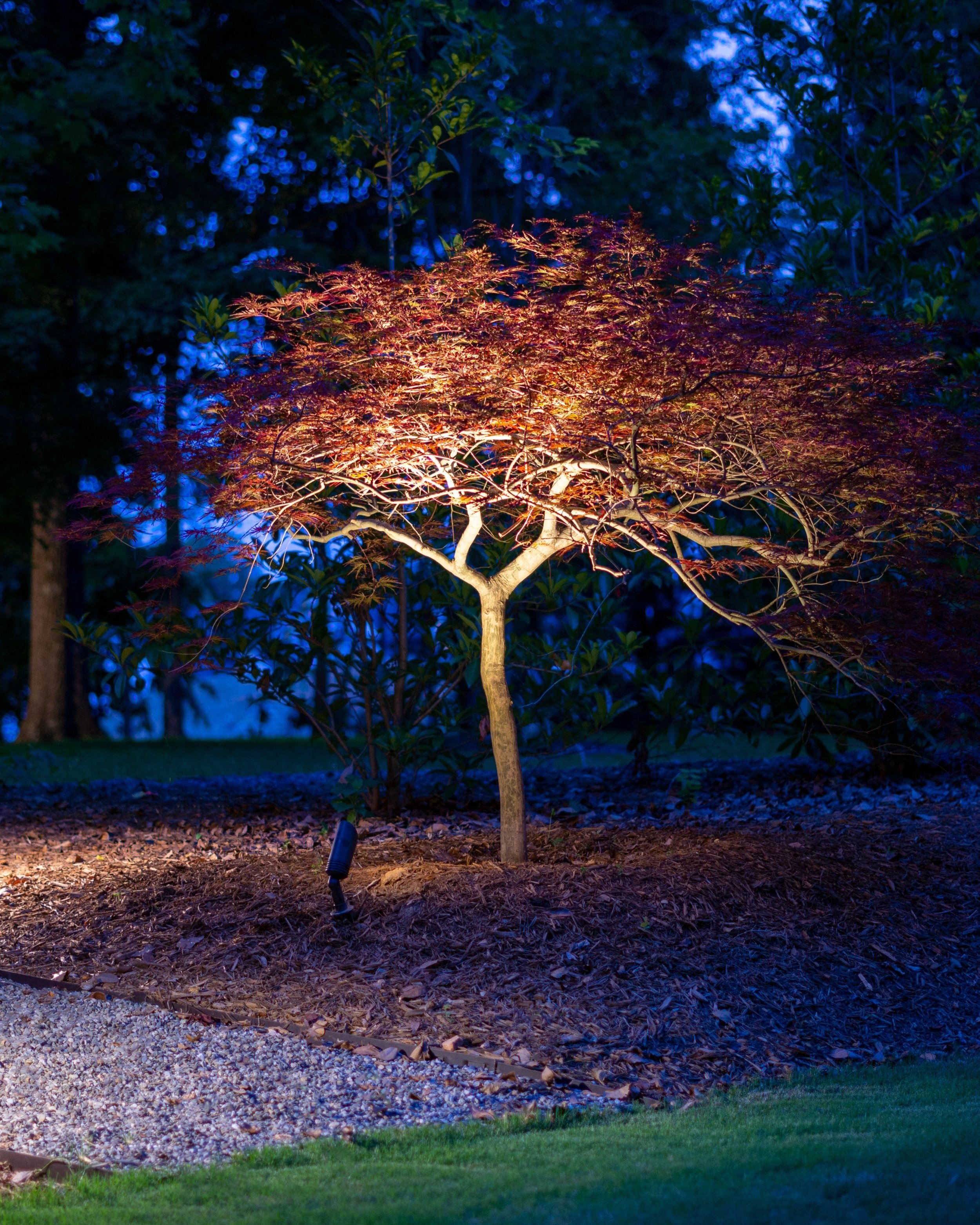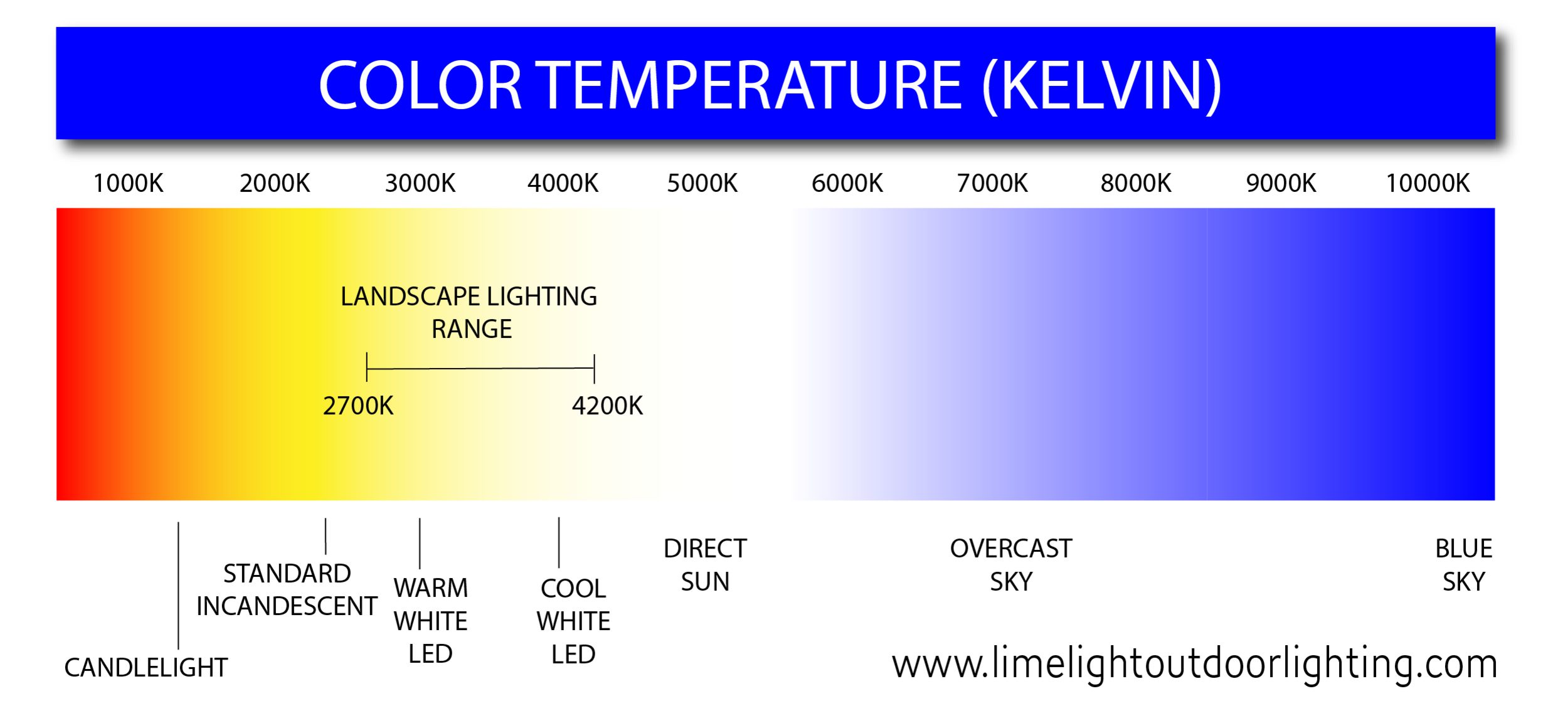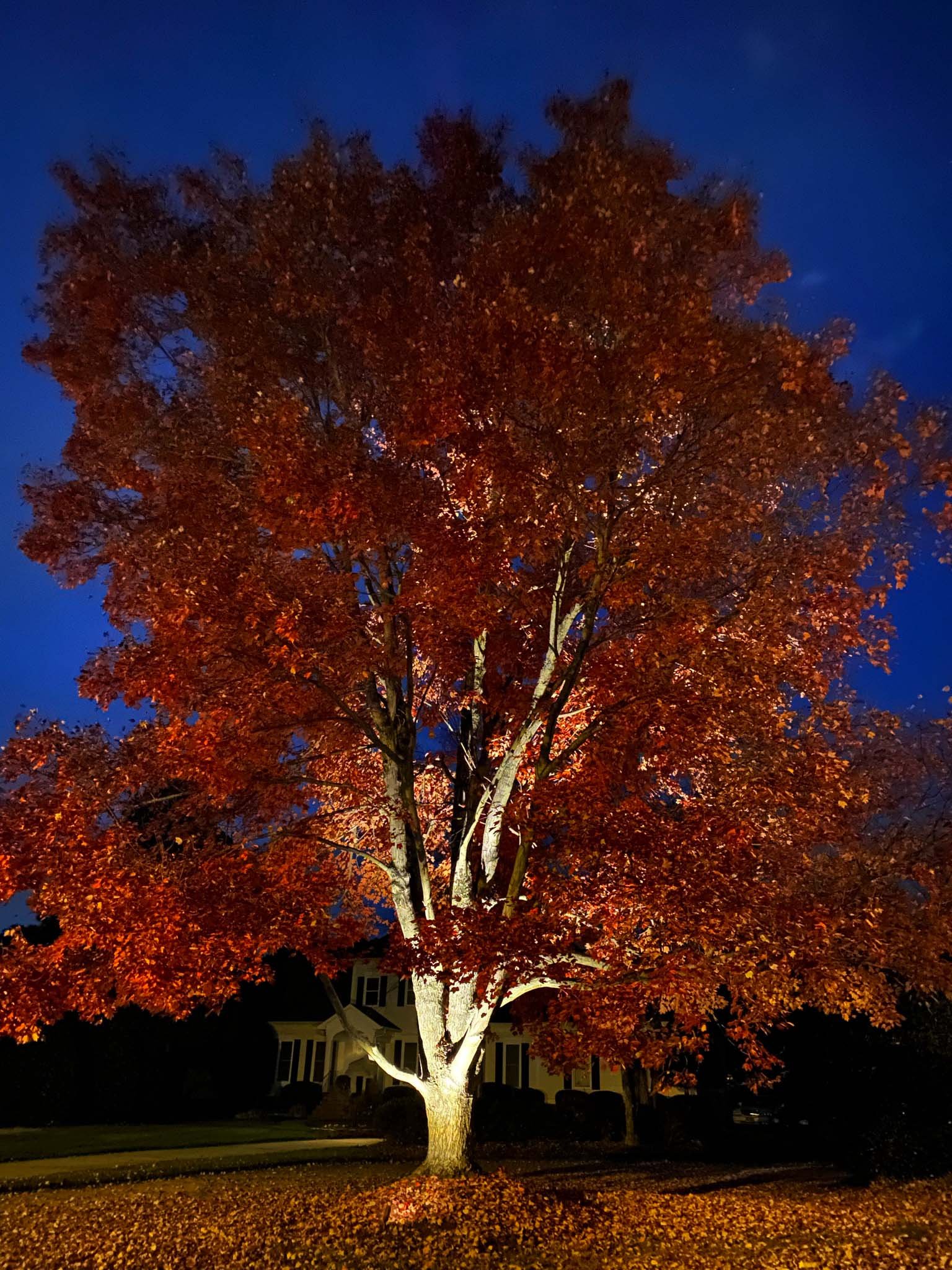Accent Lighting Trees
Why Light Trees?
Lighting trees throughout your property is a great way to add visual interest and depth in areas that would otherwise be flat and dark. Consider lighting trees along an extended driveway to welcome guests or strategically selecting trees throughout your front yard to enhance curb appeal. And lighting trees along the perimeter of your yard will create a lovely border and provide an additional layer of security by extending your field of vision to the edges of your property.
Landscape Lighting Techniques for Trees
While there are many different outdoor lighting techniques, there are two techniques we commonly use to light trees – uplighting and downlighting. While both are equally effective, they each provide very different results. When deciding which technique to use, consider the visual effect that these lighting techniques produce and what you want to do with the area you’re lighting.
Uplighting Trees
The first technique is called uplighting and involves shining light up onto the tree from lights that are positioned at ground level. Uplighting is the most common landscape lighting technique because these lights are relatively easy to install, and they beautifully illuminate the tree from the base up. Depending on the height of the tree and the lumen output of the lamps, the light may extend onto the first few layers of branches and even up into the canopy. Uplighting works best in situations where you want to draw attention to the trees themselves and avoid casting too much light on the ground below.
Downlighting Trees
The second technique is called downlighting and is sometimes referred to as “moonlighting.” Instead of lighting from below, downlights light from above. Keep in mind, lights mounted higher will illuminate larger areas while lights mounted lower will illuminate smaller, more specific areas. While the terms downlighting and moonlighting are often used interchangeably, moonlighting is a specific type of downlighting. Moonlighting creates lighting that looks and feels organic by simulating natural moonlight. Fixtures are typically mounted high in trees to allow light to naturally shine through the branches and leaves. This gently illuminates the ground below and can create interesting patterns of light and shadows. Moonlighting is a great option in areas that need low-level lighting on the ground such as driveways, lawns, and patios.
Combining Uplighting & Downlighting
In certain situations, it may be necessary to combine lighting techniques to achieve a desired look. For this project, we combined uplighting and downlighting. Notice how the downlights from the center tree illuminate the tree itself and gently illuminate the rocks and plants around the water feature. Then, the uplighting on the surrounding trees draws your attention upward thus creating depth and visual interest.
Important Considerations for Lighting Trees
There are four important elements to consider when lighting trees: number & placement of lights, color temperature, beam angle, and lumen output. Because there are so many options for fixtures and lamps , this process can be overwhelming when designing an outdoor lighting system. Understanding the following considerations will help you navigate these options and select the right fixtures/lamps for your trees.
Choosing the Right Number & Placement of Lights for Trees
There are two factors to consider when selecting the number and placement of lights. First, consider the size of the tree. While a smaller tree may only need a single light, a larger or wider tree may need two or even three lights to fully illuminate it. Second, consider the viewing angles. Let’s say you want to increase curb appeal and have selected a few trees in your front yard to illuminate. If you house is set back from the road or is at the end of a cul-de-sac, you may only have one viewing angle to light. However, if your house is on a corner lot, you may want to light the trees from two angles so that traffic from either direction will see the illumination. The same is true for long driveways – lighting trees so that they are visible while entering and exiting the drive will be best.
This huge Live Oak tree took three fixtures to properly light.
This small Japanese Maple only needed a single light.
Choosing the Right Color Temperature for Trees
The second element to consider when lighting trees is color temperature. A kelvin (K) is the SI unit of measurement for thermodynamic temperature. Simply speaking, the kelvin measurement will tell you the “temperature” or COLOR of the light. When you are selecting a fixture or lamp, just remember that orangish or yellowish light (“warm” colored light) is actually produced at lower temperatures (under 3000K) while bluish light (“cool” colored light) is produced at higher temperatures (over 4500K).
When you are lighting trees and other plants, the most important thing to remember is that warmer colored lights (under 3000K) will highlight warmer colors in the plants, whereas cooler colored lights (over 4500k) will highlight the cooler colors in the plants. With trees, warmer lights will highlight the tan, brown, and orange colors in the bark and branches while cooler lights will bring out the green in the leaves and needles. Evergreens look especially beautiful with cooler temperatures.
Low Kelvin lamps bring out the browns, tans, and oranges in the trunks of these beautiful palms.
High Kelvin lamps make these evergreens pop by bringing out the vibrant green of the needles.
Choosing the Right Beam Angle for Trees
The third element to consider when lighting trees is beam angle. Beam angle or beam spread measures the spread of light (width of the beam) from a light source. As light moves away from the light source, it spreads out and becomes less intense. When selecting the appropriate light, consider the width of the trees that you want to illuminate. Wider trees will require wider beam spread while taller, narrow trees will do best with a narrower beam spread.
Choosing the Right Lumen Output for Trees
The fourth and final element to consider when lighting trees is the lumen output. A lumen (ln) is the SI unit of measurement for luminous flux or the perceived power of a light (BRIGHTNESS). The number of lumens needed for lighting trees will depend on how bright you want the light to be and how far you want that light to reach. Oftentimes, this is a personal design choice. Do you want to make a statement with brightly illuminated trees or would you prefer a soft, inviting glow?
For more information about these last three elements, refer to this article, “Outdoor Lighting Basics – Kelvin, Lumens, Beam Spread.”
FREE DOWNLOAD
Planning a landscape lighting project?
Download our FREE lighting guide for step by step instructions on how to design and install a landscape lighting system.
Landscape Lighting Through the Seasons
Well-lit trees will be a beautiful focal point throughout the year. Whether you’re enjoying the Spring and Summer blooms, or accentuating the vast colors of Autumn, or simply appreciating the natural shape of the trunk and branches in the Winter, lighting will help you enjoy your trees regardless of the season. We especially love illuminating evergreens because they add color and vibrancy to your winter landscape. Sit back and watch as your property takes on new character throughout the seasons. Continue to enjoy these changes even after the sun goes down. There is truly no seasonal limit to the beauty of a professionally designed outdoor lighting system.
Hiring a Professional Landscape Lighting Contractor
While some enjoy a weekend of DIY projects, consider reaching out to a local landscape lighting contractor as you plan your next outdoor lighting project. Beyond technical skills, lighting professionals also have the knowledge and expertise to design a system with both form and function in mind. A thoughtfully designed and professionally installed exterior lighting system with beautifully lit trees will undoubtedly enhance your landscape year-round.
Looking for an Outdoor Lighting Contractor in Charlotte, NC?
At Limelight, outdoor lighting is all we do. We offer design, installation, and maintenance services and would love to help you design a system that lets you make the most of your landscape — day and night.
We are a fully insured, family-owned company with a passion for well-designed outdoor lighting! Furthermore, we understand that client satisfaction is the key to our success, and we enjoy working with our clients throughout the process to deliver an outdoor lighting system that fits their vision and budget.
Getting started is simple.
Call Limelight Outdoor Lighting at (704) 989-3635 or follow the link below to get a FREE quote for your landscape lighting project.

